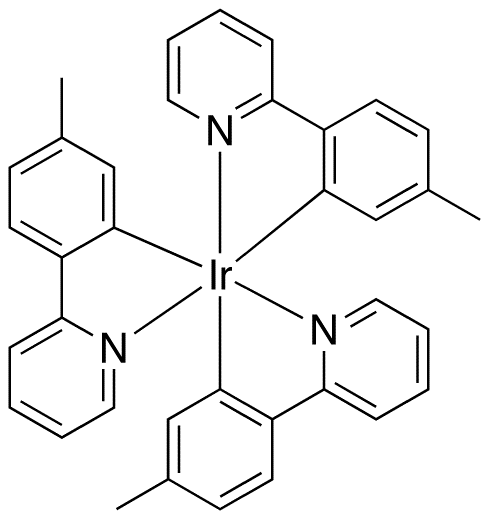Did you know that a pickle will glow if you pass electrical current through it?

“A pickle glowing due to electrical current” (source: Wikimedia Commons, available under CC BY 3.0)
This phenomenon, while it is peculiar and at first seemingly inapplicable, is a simple example of the same physical principles that underlie the beauty of our modern smartphone displays. An electrical current heats water in the pickle. The pickle rapidly dries out near the electrodes (here the electrodes are the forks at the ends of the pickle), causing sparks to leap between drier and wetter regions of the pickle. Sodium atoms throughout the pickle are then excited by these sparks to emit a characteristically yellow-orange light.
The same effect occurs in smartphone displays made from Organic Light-Emitting Diodes (OLEDs). However, instead of sodium, a film of some organic compound situated between two electrodes (of which one or more is transparent) is excited by electrical current to emit visible light. This approach to producing light differs from previous LED technologies that relied on a “backlight” (a fixed arrangement of LEDs) to produce visible light from electrically excited compounds.
These organic compounds are rarely simple molecules. Take, for example, an iridium-based chemical complex known as Ir(mppy)3, shown here.

“A diagram of Ir(mppy)3” (source: Wikimedia Commons, available as part of the public domain)
We will not discuss the structure or nomenclature of this compound, but it is worth mentioning that the compound is phosphorescent (it emits light without heat nor combustion) and will emit green light in response to electrical current. Other compounds similar to Ir(mppy)3 have been discovered to produce red and blue light. In application, these three colours (red, green, blue) may be added in different proportions to produce the many visible colours that we see (known as the RGB colour model).
It is noteworthy that the discovery of a blue LED was awarded the 2014 Nobel Prize in Physics, emphasizing the modern and increasing relevance of OLED research.
New research seeks to overcome limits on the efficiency, lifespan, and cost of OLEDs. For example, while OLEDs are often a low-power alternative to the former backlight-based LED technologies, displaying images with white backgrounds (such as most web pages) using OLEDs require as much as three times the power of common LEDs. The metals used in OLEDs (such as iridium) are also rare and often expensive, meaning that consumer technologies derived from OLEDs come at a greater cost to both their users and the environment.
With cost and efficiency in mind, the Wolf Research Group at UBC has explored the use of copper (which is abundant on Earth) and other elements in place of iridium to produce candidate compounds for OLED technologies. Breakthroughs like these push us towards new innovations to benefit consumer technologies, and materials science overall.
– Eric Easthope
